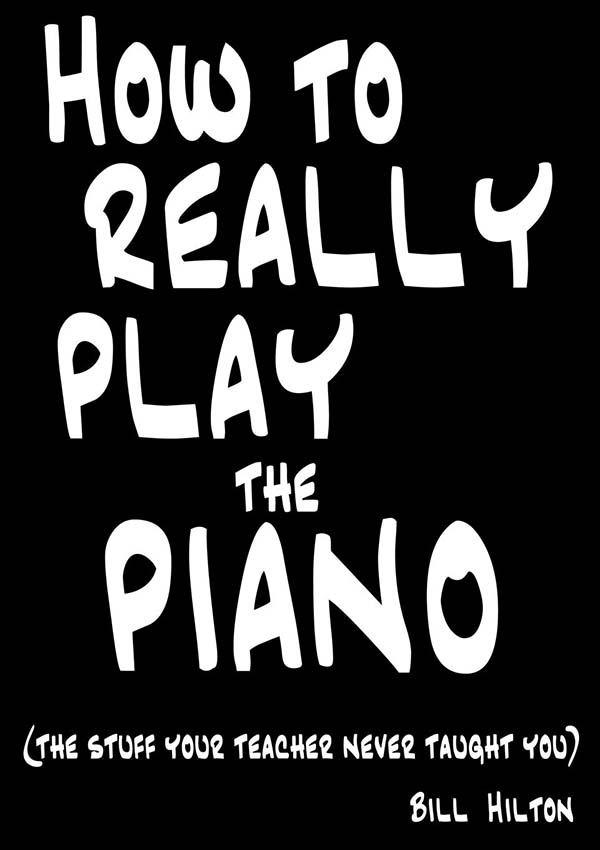“How To Really Play The Piano” is a book that teaches you learn new songs quickly, improvise, get started with jazz and blues, use lead sheets and chords, and much more. You’ll quickly learn how to read chord symbols, free your hands to improvise great solos, accompany singers and other musicians and all the stuff that formal piano lessons rarely include.
Piano lessons
If you’ve ever had piano lessons, you’ll know most piano education is based on playing lots of classical music and lots of scales. There’s nothing wrong with that, especially if it’s your ambition to become a competent classical musician.
But the chances are your piano teacher never taught you a lot of the stuff you really wanted to learn. I was lucky: as well as having an outstanding classical teacher, I learned to improvise, play jazz and blues, pick up pop songs, play from chord charts, accompany singers and play in bands. I learned to play like Jools Holland, Elton John, Ben Folds and Jamie Cullum (though I wouldn’t claim to be as good as them). My friends, many of whom played the piano themselves, used to ask me how I did it. This book is an attempt to answer that question.
Free download:
https://sheetmusic.me/how-to-really-play-the-piano
Free download for educational purposes only. For commercial use, buy “How To Really Play The Piano” on Amazon:
https://amzn.to/3Fo91vV
What you need to know to use this book
How To Really Play The Piano is not for absolute beginners. To get the most out of what follows, you should be able to:
- Play easy pieces with both hands together – or, if you’ve been
away from the piano for a few years, have the basic skills and willingness to get back to this level. - Read music in both treble and bass clef. You don’t need to be a
fluent or fast reader of music – still less a sight-reader – but you need an idea of which notes are where on the page and on the piano, and to be able to read and interpret standard rhythms, including dotted rhythms. - Make sense of elementary music theory. The most important
things to understand are key signatures and the scales associated with major and minor keys. You also need to know a little about intervals, a topic that isn’t always covered in basic piano lessons. As such, I’ve included a short overview of intervals in Appendix 1, where you’ll also find a list of resources that will help you if you need reminding of any other aspects of theory.
Associated Board
If you’ve reached Grade 3 or 4 standard (Associated Board or similar) you’ll be fine.
Even if you’ve only done Grade 1 or Grade 2 you should get by pretty well. Don’t worry if some of the examples in the book look difficult: most are included for analysis rather than performance.
If your lessons were a long time ago and you feel you need a refresher, you may find it’s just a case of sitting down at the keyboard and re-familiarising yourself with the instrument. If you need some more serious reminding, a teach-yourself guide may come in useful. The best available is probably Kenneth Baker’s classic, The Complete Piano Player. Better still, talk to a piano teacher about a few refresher lessons. If you’ve had lessons in the past, it shouldn’t take long to get up to speed.
